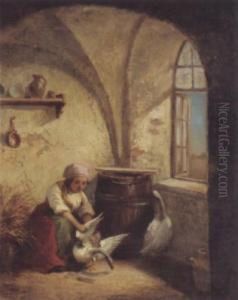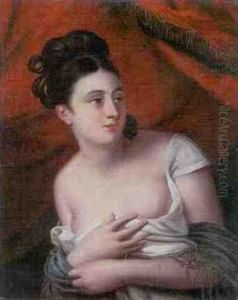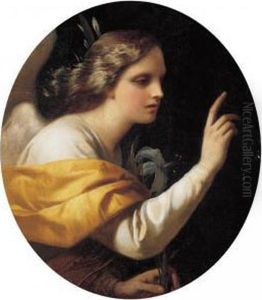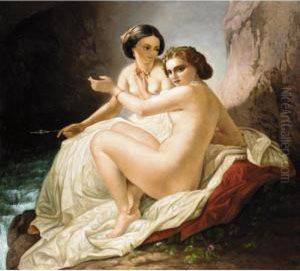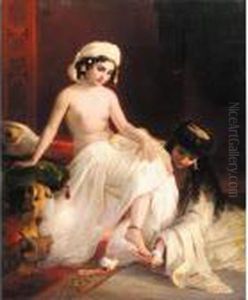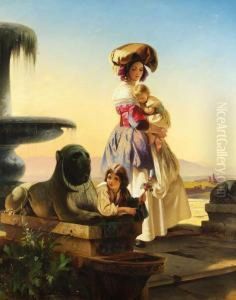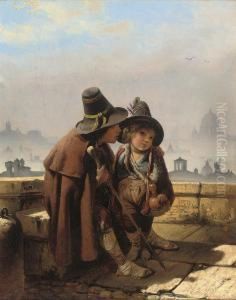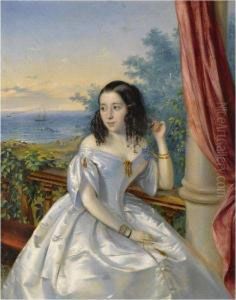Timoleon Carl Nehf Von Neff Paintings
Timoleon Carl Nehf Von Neff, also known as Timofey Andreyevich Neff, was a distinguished Baltic German-Russian painter, recognized for his masterful portraits and genre scenes, as well as his contribution to religious and historical art. Born on August 13, 1804, in Pärnu, which at the time was part of the Russian Empire (now Estonia), Neff was immersed in the cultural milieu that often accompanied the Baltic German community.
Neff's early inclination towards art led him to study at the Imperial Academy of Arts in Saint Petersburg, where he was a student from 1824 to 1831. His exceptional talent was evident, and he was awarded a gold medal for his achievements. Upon completing his studies, Neff's merits earned him a scholarship to travel abroad, a common practice for promising artists during that period.
He spent significant time in Italy, particularly in Rome, where he was deeply influenced by the works of the Italian masters. Neff's exposure to classical and Renaissance art greatly impacted his style, infusing it with a sense of romantic classicism that would characterize much of his later work. During his sojourn in Italy, he also painted portraits of several prominent individuals, which helped establish his reputation.
Returning to Russia in the late 1830s, Neff became a sought-after artist among the nobility and the imperial court. He painted portraits of several members of the Russian aristocracy and was eventually appointed as a court painter. His work during this time also included religious commissions for various churches, and he contributed to the embellishment of the interior of St. Isaac's Cathedral in Saint Petersburg.
Neff's dedication to his craft and his artistic accomplishments led to his induction as an academician in 1849 and later as a professor at the Imperial Academy of Arts. He played a significant role in the education of future Russian artists and was involved in the academic and artistic life of Saint Petersburg.
Timoleon von Neff's career continued to flourish throughout the mid-19th century, and his paintings were exhibited widely, including at the Exposition Universelle in Paris. His work is characterized by refined execution, rich coloration, and an adherence to classical compositional principles, which distinguished him from many of his contemporaries who were moving towards Realism.
Neff's contributions to Russian art were recognized with numerous honors, and his works remain in the collections of major museums in Russia and beyond. He passed away on December 23, 1877, in Saint Petersburg, leaving behind a legacy as one of the notable artists of his era, bridging the neoclassical and romantic styles within the Russian context.
